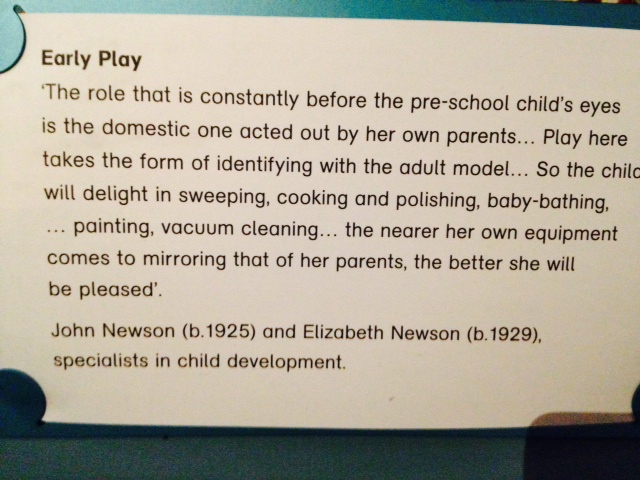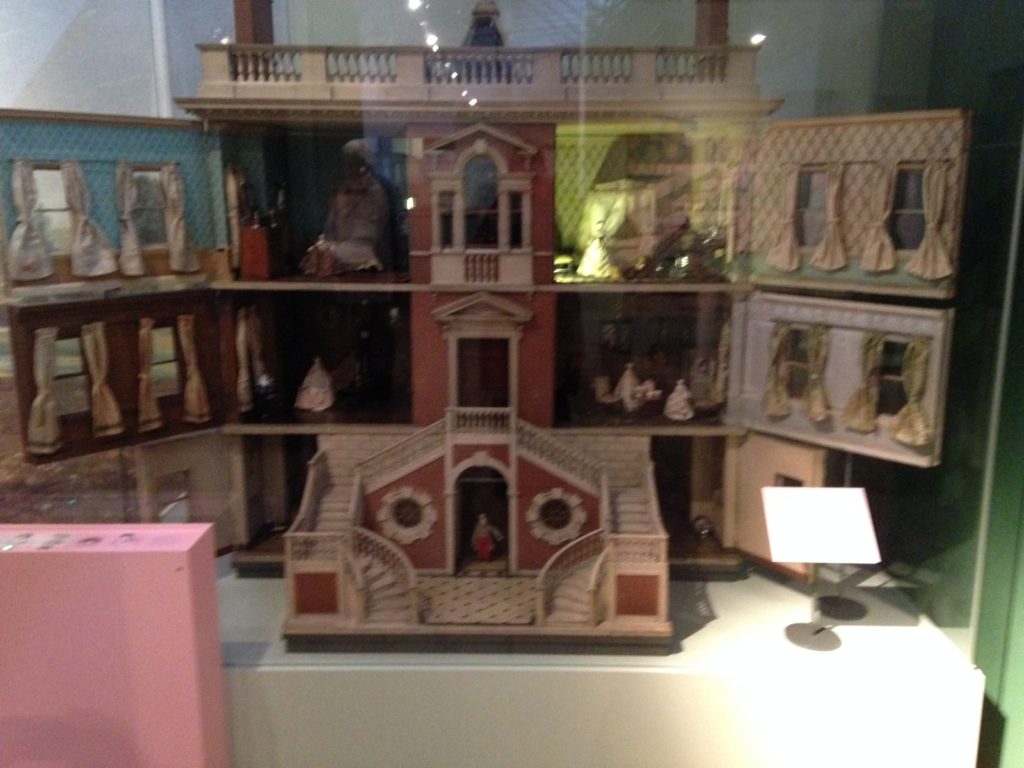The Museum of Childhood (Pt. 2)
 Visitors to the Victoria and Albert Museum of Childhood can see one of the greatest collections of doll houses in the world. The houses range from Victorian mansions to modern-day apartment complexes; each unique and representative of a different era in history.
Visitors to the Victoria and Albert Museum of Childhood can see one of the greatest collections of doll houses in the world. The houses range from Victorian mansions to modern-day apartment complexes; each unique and representative of a different era in history. 
Some of the dollhouses seemed far too delicate for play. Some were very complicated. They all had intricate details that revealed a slice of life from a certain place and time so carefully designed that you can almost see teeny families living inside of them.
How does “housekeeping” or “dollhouse” play connect to math? As young children explore family life, they consider the relationships that exist between people and between the roles they play. Imagine the young child putting the baby in his crib. She is thinking about the babies she knows in her life. They are small and they are young. Their growing understanding is that babies are smaller than some other people and younger than some other people. It is the relationship between the baby’s age and size as well as his role relative to others in his family. Once the young child begins making these observations and putting this information together, she is constructing logico-mathematical knowledge.
Arranging the furniture and sorting it into the appropriate rooms is another way the young child develops mathematical competence while playing with dollhouses. The places and spaces she encounters will challenge her social constructs about how these things compare to her own home and family. She will have to develop new schemas for new information as her current schemas are challenged. Even if your classroom dollhouse doesn’t look exactly like the homes your children live in, they provide a framework for play that encourages creative thinking.
